“From the life threads spun by the Norns to the body’s own system of nerves…”
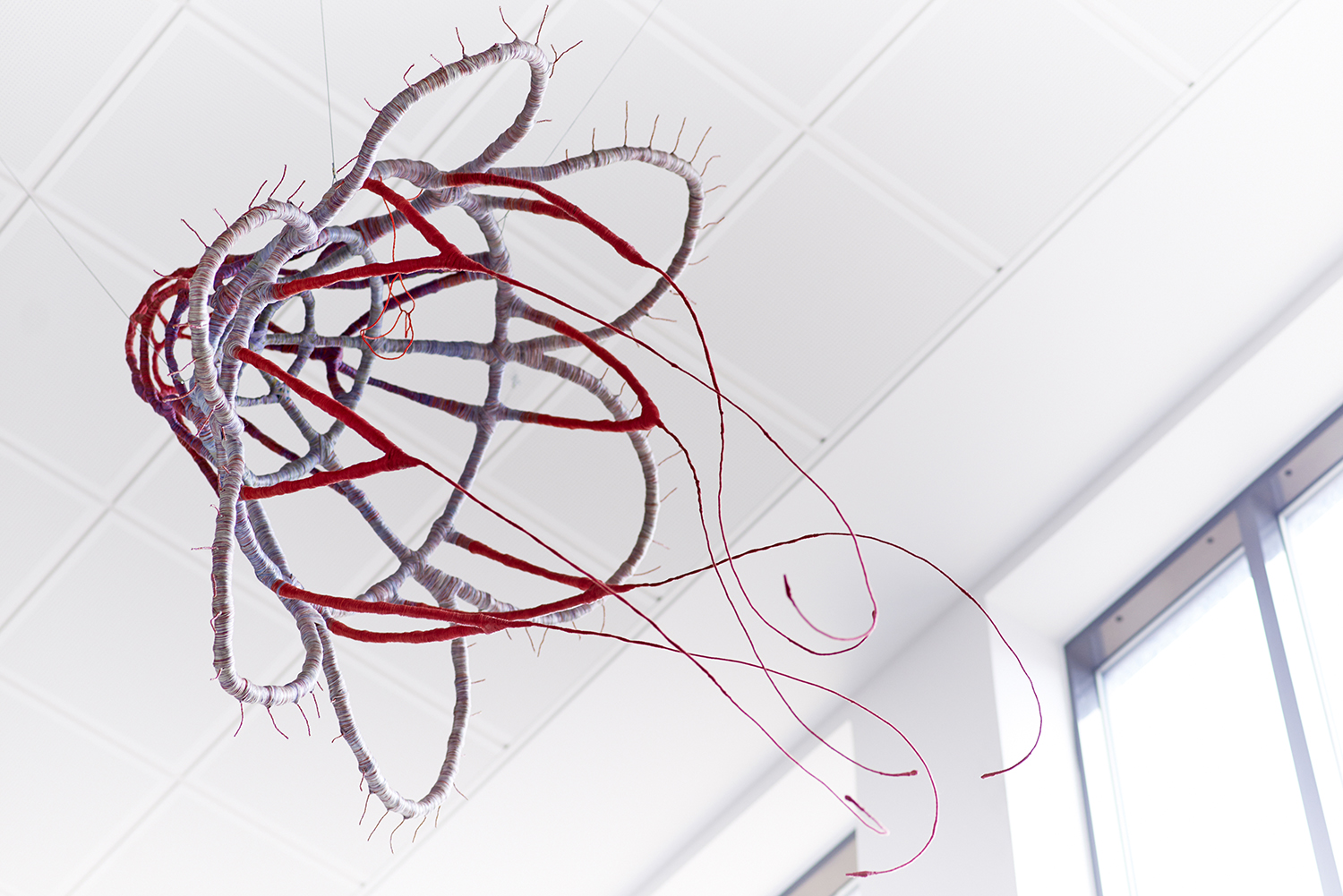
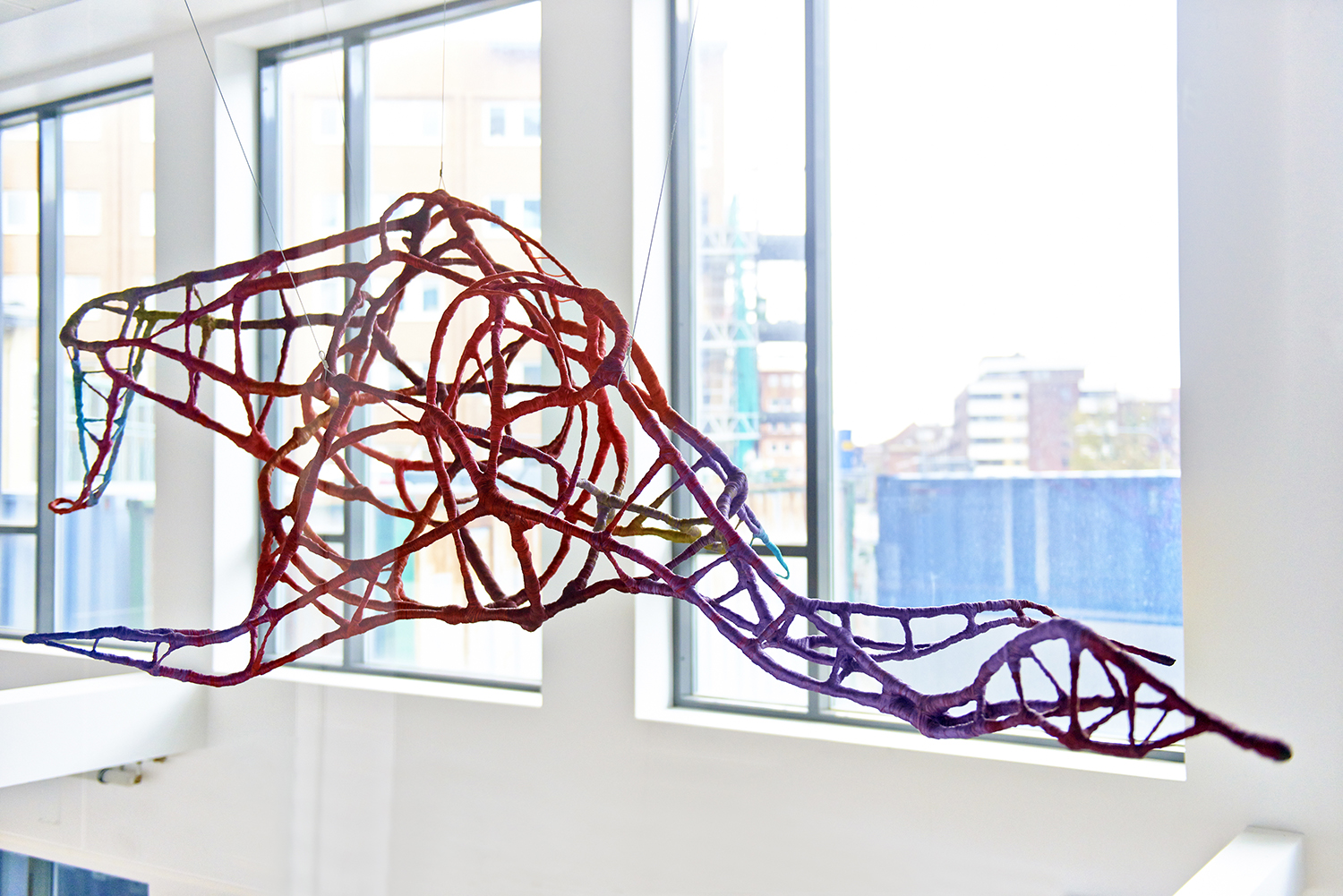
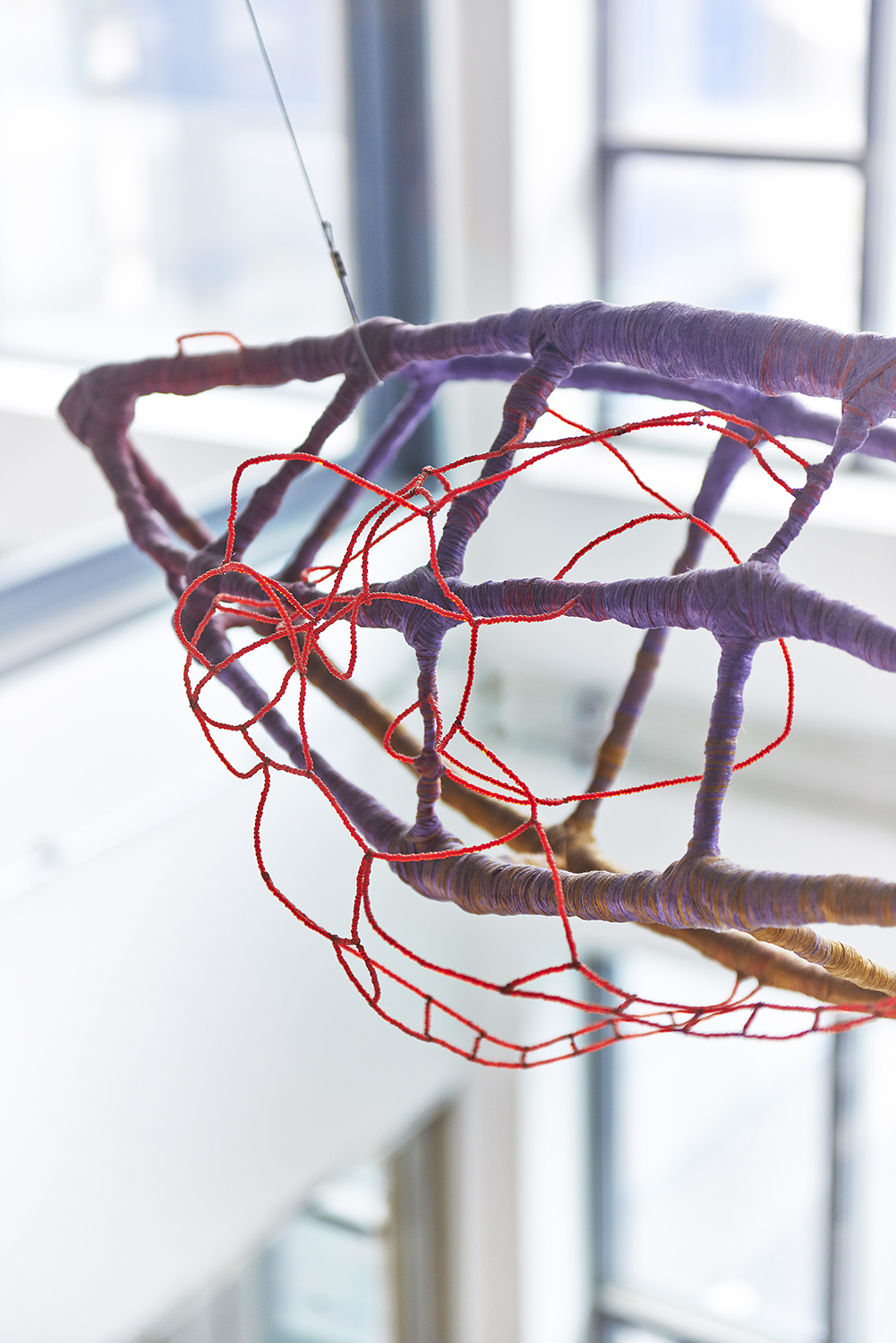
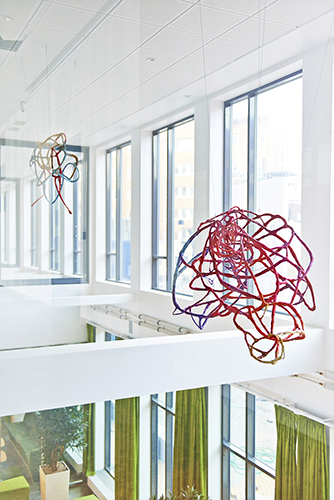
I can’t recall exactly when I saw Helene Hortlund’s crocheted room drawings the first time, but they made a lasting impression; black vertical lines in the room, in a robust dance with gravity. We also met in a discussion about stitching and the meaning-laden dimension of thread, how textiles have forever conveyed meaning in their own subtle way – persistently and sensually, more fundamental than the alphabet, closer to the skin, closer to life…
As we talk, she mentions that she long ago wanted to add something to the medium of drawing, and simultaneously to achieve more scope for textile art. The greater scope that is often mentioned when painting, drawing and sculpture enter into cross-disciplinary dialogue, seems to be a natural starting point for her. Many of the elements are familiar, some come from a textile sphere (stitching, a crocheted star), others from the world of drawing (an outlined shape, straight-forward but with nerve). Interacting with each other and with the space, the parts are taken one step further. What more can be said about such shifts? What happens when a (textile) sculpture changes from being ‘just’ a sculpture into ‘being a drawing’?
One perspective is that the spatial drawing activates the room, like a sign, a positive exclamation. A new ingredient that, in its abstract way, infuses new energy. In her day, the sculptor Eva Hesse (1936–1970) explored new roads for spatial interventions, via her own characteristic materials (rope, wax, varnished cheesecloth).
The artistic design Life Forms, with its eight communicating parts, installed at the police headquarters and court house complex Rättscentrum in Malmö (2013), reveals the familiar strains of Helene Hortlund’s winding (‘drawn’) poignancy. Each part is charged with the calm energy of a strong foothold in crafts (shiny linen thread, a play of lines at the micro-level).
While her earlier spatial drawings were black, Life Forms, with colours such as coral and orange, awakens associations to an organic world. As the artist writes: “Signs in the room, but also, if you wish, reminders of our responsibility to all life on earth.”
Katji Lindberg
Work in progress
STOCKHOLM autumn 2012. The model shows the 8 elements of Life Forms and the intended design, and placement at Rättscentrum in Malmö.

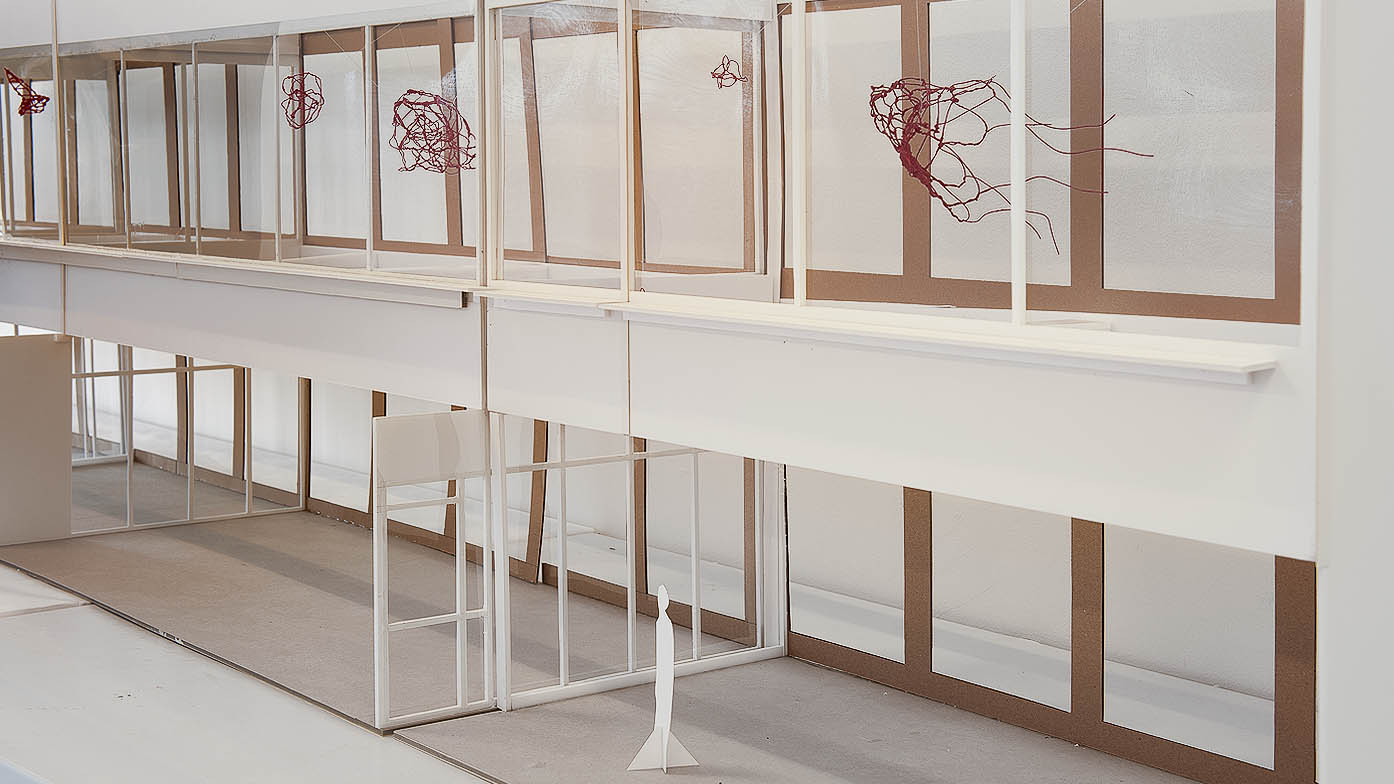
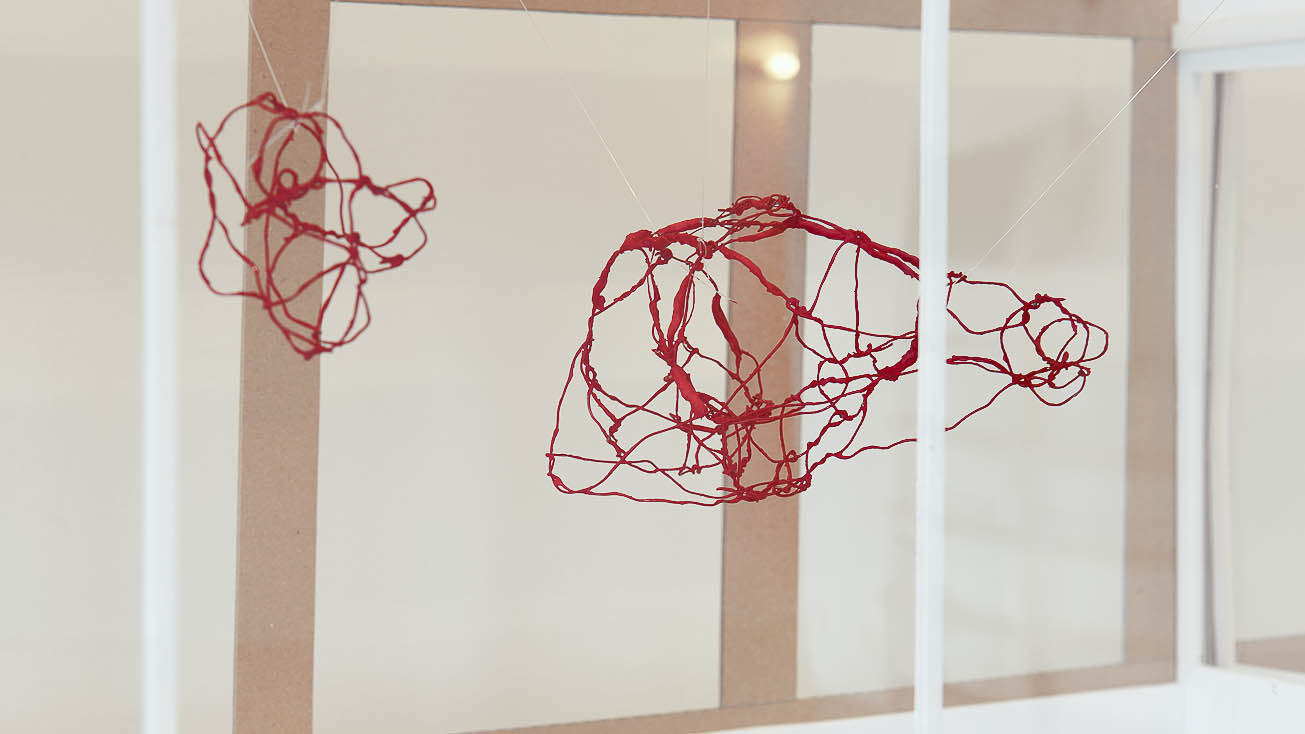
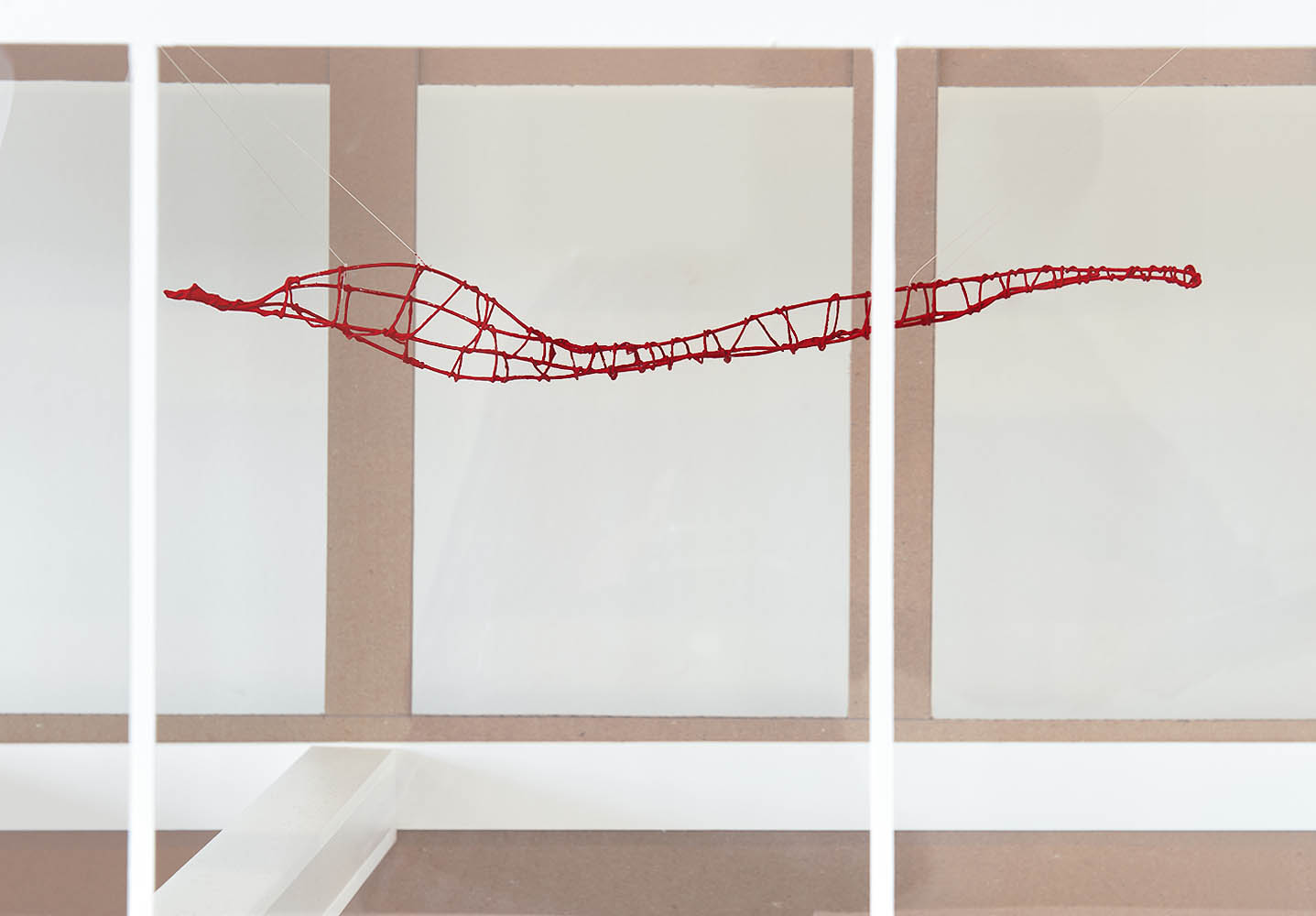
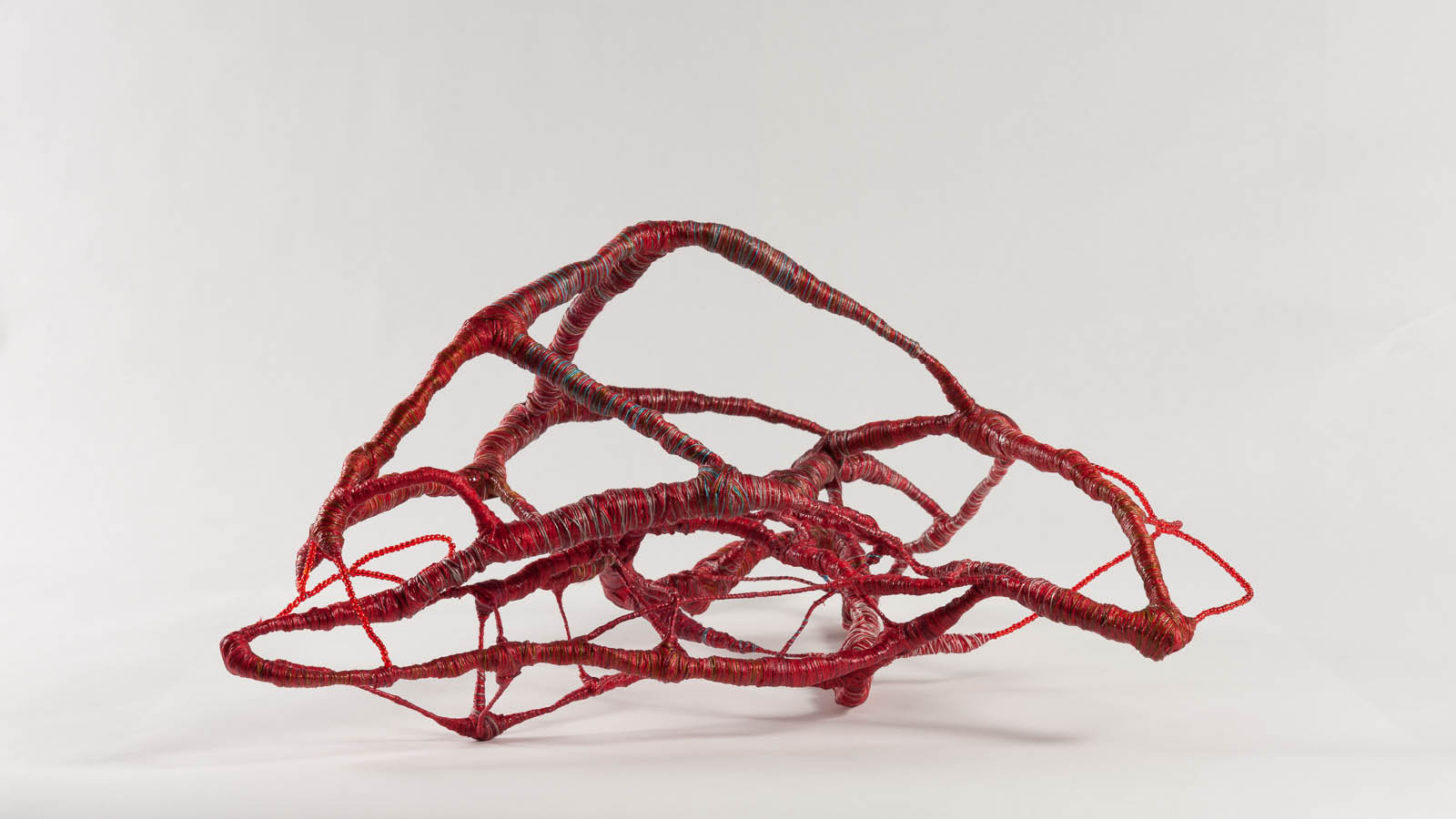
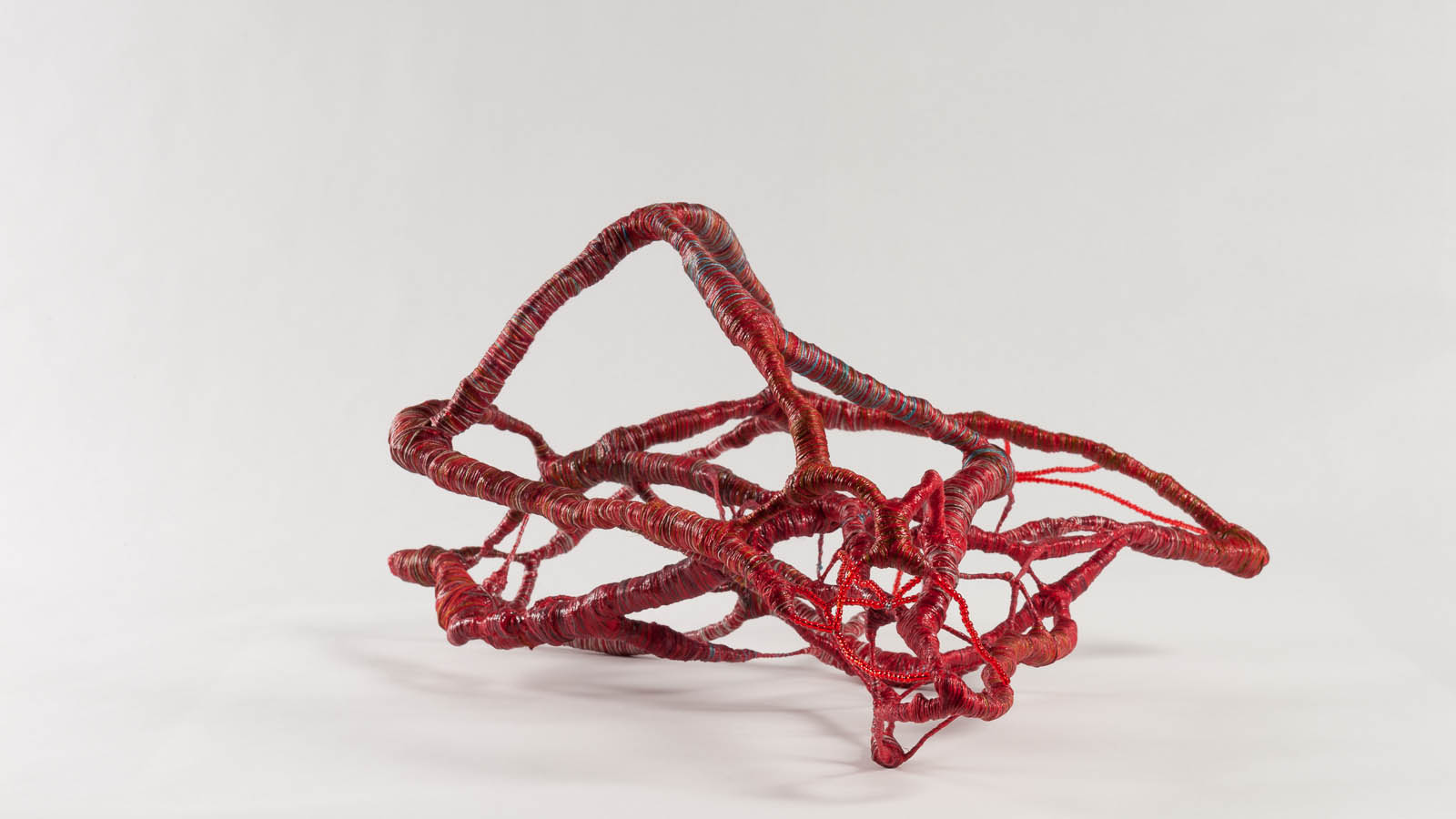
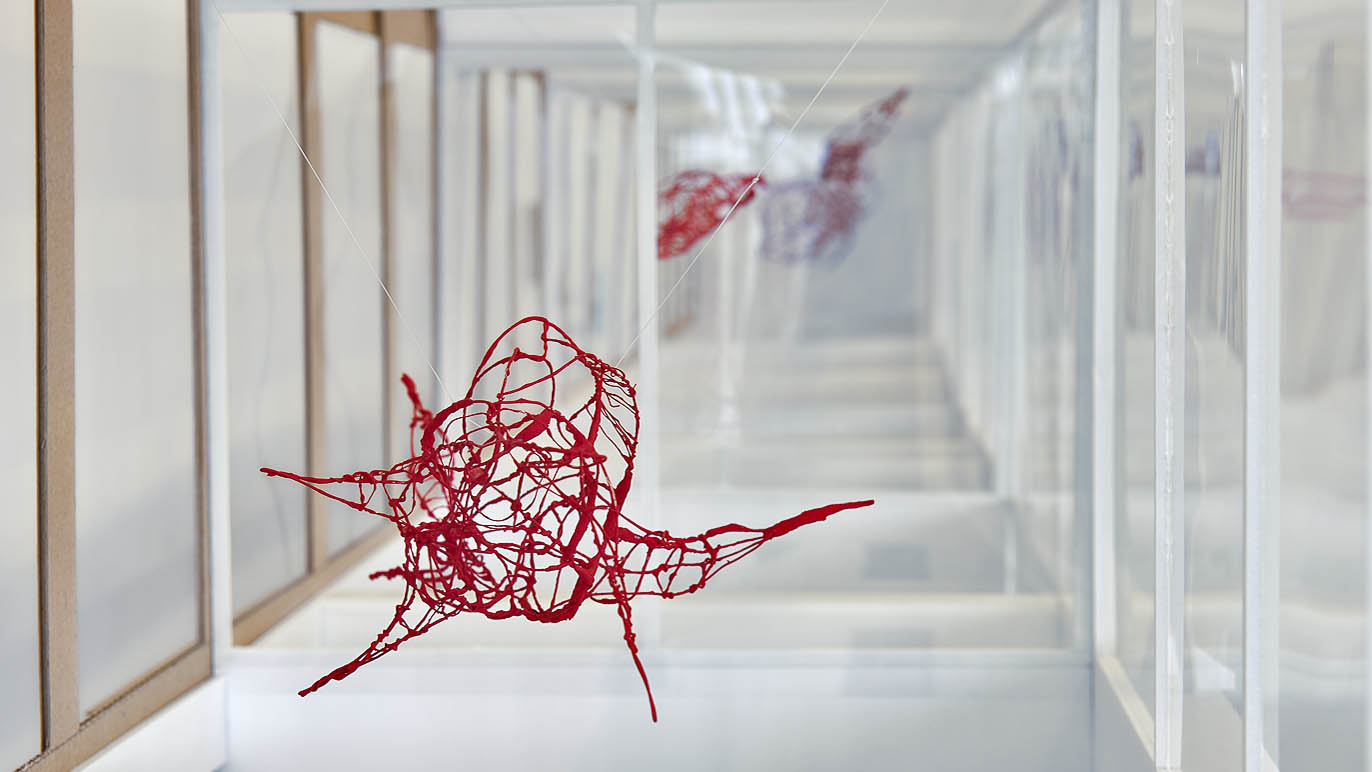
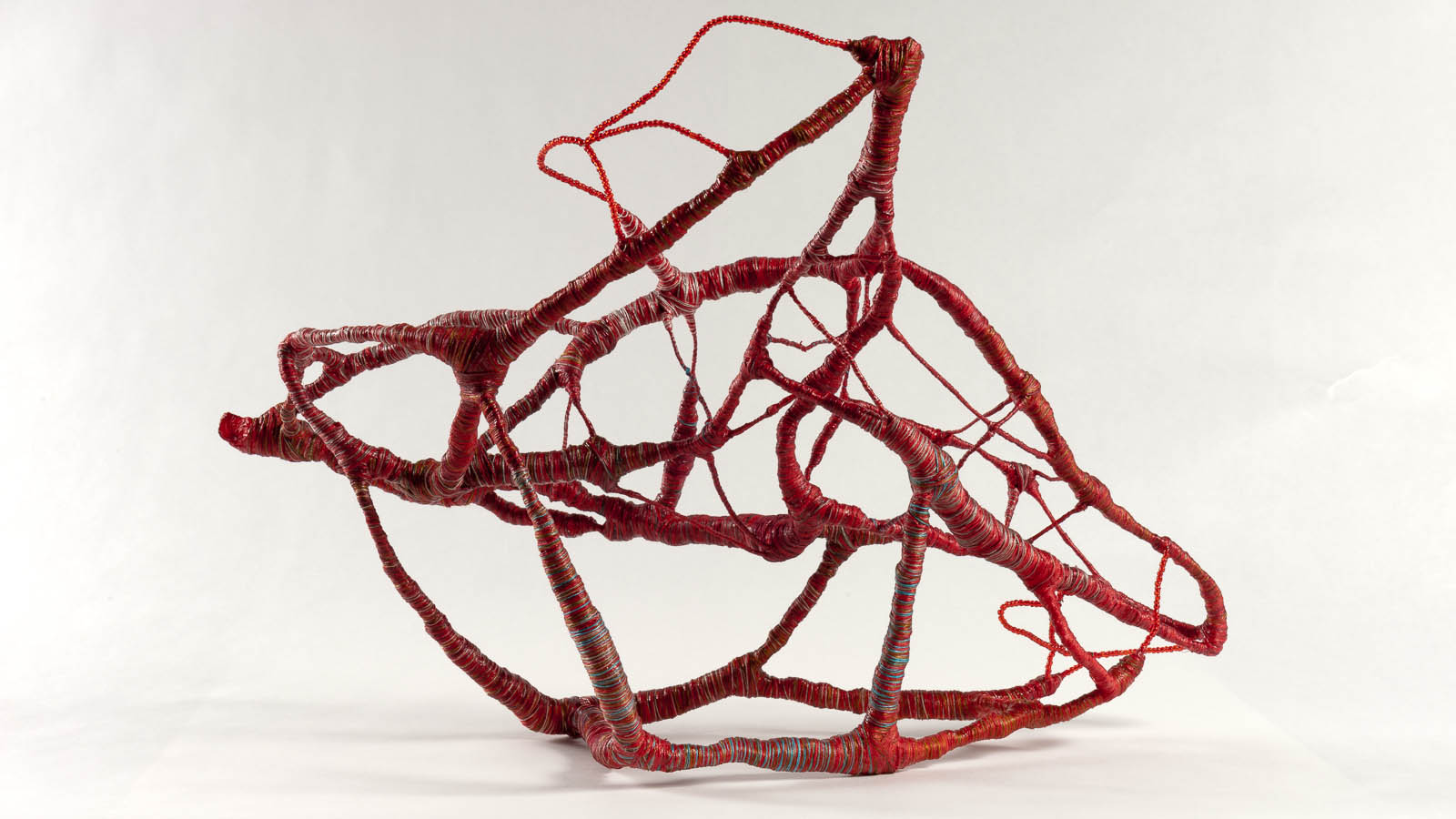
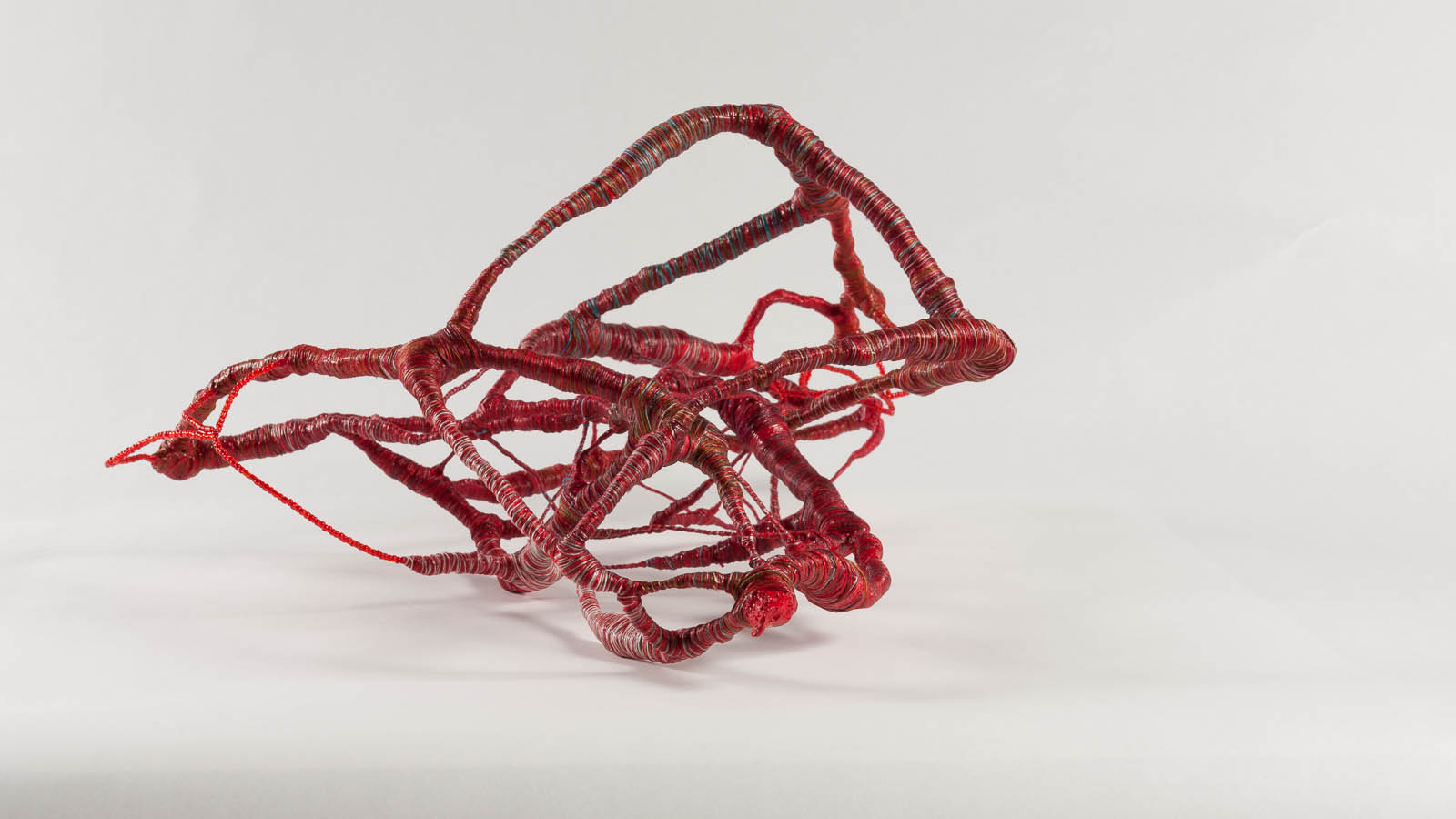
Find the artwork
Lunds universitet Malmö. Vintern 2013
Porslinsgatan, 211 32 Malmö